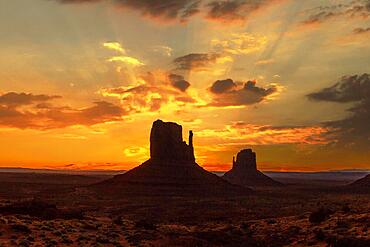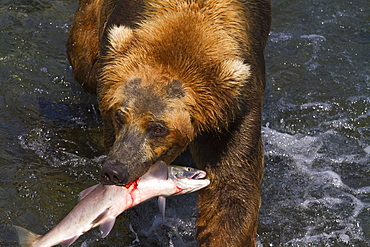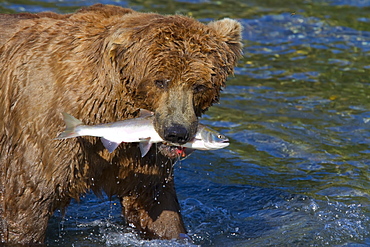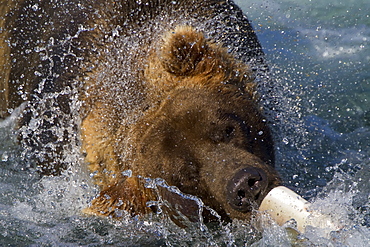Recent searches
Loading...
832-404297 - Detail of a bit of Monument Valley at its beautiful sunrise, Utah
1350-47 - This is the Belt of Orion with its three blue stars across the top of the frame (L to R: Alnitak, Alnilam, and Mintaka), with the iconic Horsehead Nebula (aka B33) below Alnitak, with the dark Horsehead set against the bright nebula IC 434, aka Orion's Dagger. The pinkish nebula above Alnitak is NGC 2024, the Flame Nebula. The small blue reflection nebula left of the Horsehead is NGC 2023, with smaller IC 435 to the left of it. The field is filled with the large open cluster Collinder 70. The multiple star at bottom left of centre is Sigma Orionis. Many other smaller bits of reflection nebulas populate the field in and around the Belt.
1304-95 - The Grudge building built in 1954, the house is just a bit over 13 feet at its widest point, and around 2 feet at its narrowest, Beirut, Lebanon, Middle East
1174-3778 - A horse with bridle and bit, breathing heavily after exercise, steam rising in cold air, Horse Muzzle, England
832-372421 - Man carving Tibetan Buddisht mantras on a stone plate, Zanskar Valley, Zanskar, Ladakh, Jammu and Kashmir, Indian Himalayas, North India, India, Asia
832-372422 - Tibetan Buddhist mantras carved in stone, Tongde Monastery, Zanskar Valley, Zanskar, Ladakh, Jammu and Kashmir, Indian Himalayas, North India, India, Asia
832-333031 - Computer virus, "virus" spelled out in red between bit coding in a computer data stream
832-249558 - Back seat, child car seat, in accident damaged car
1161-1348 - Young man rides a grey mare horse in an eventing competition, United Kingdom
832-153888 - A giant tunnel boring machine of the specialist firm Herrenknecht, length 90 meters, bore diameter more than 10 meters, in front of the construction site of the second tube of the Kaiser Wilhelm Tunnel at the Ediger-Eller district, Rhineland-Palatinate, G
832-153890 - A giant tunnel boring machine of the specialist firm Herrenknecht, length 90 meters, bore diameter more than 10 meters, in front of the construction site of the second tube of the Kaiser Wilhelm Tunnel at the Ediger-Eller district, Rhineland-Palatinate, G
832-153891 - A giant tunnel boring machine of the specialist firm Herrenknecht, length 90 meters, bore diameter more than 10 meters, in front of the construction site of the second tube of the Kaiser Wilhelm Tunnel at the Ediger-Eller district, Rhineland-Palatinate, G
832-153892 - A giant tunnel boring machine of the specialist firm Herrenknecht, length 90 meters, bore diameter more than 10 meters, in front of the construction site of the second tube of the Kaiser Wilhelm Tunnel at the Ediger-Eller district, Rhineland-Palatinate, G
857-29803 - Jason Russ lays a big spray up into the last bits of light on the Columbia River
857-27588 - Seniors share a bit of gossip after an American Legion Auxillary meeting in Nalcrest, Forida a planned retirement community for US Postal workers.
1012-107 - Whale shark. Growing over 17m in length, despite it is th largest fish of the world, scientists still do not know a lot about the Whale Shark, such as where they migrate to, why divers don't see the free swimming babies, etc. Here, a bunch of divers may be a bit too close to the 8m long shark. By regulations in Ningaloo, swimmers have to be 3 meter from the whale shark. Ningaloo Reef, Western Australia
1067-53 - Thorny seahorse, Hippocampus hystrix. Variable in color, this species is often found in sandy, rubble bottoms clinging to sponges or bits of coral. Lembeh Strait, North Sulawesi, Indonesia, Pacific Ocean.
915-1020 - Sheep's-bit flower Jasione montana Deer Park, Marloes, Pembrokeshire, Wales, UK, Europe
921-413 - Polar Bear. Longyearbyen, Nordaustlandet, South Severn Is, Svalbard, Norway
975-120 - Baby Mountain Gorilla is inquisitive but content in the Volcanoes National Park, munching on a bit of leaf. Volcanoes National Park, Virunga mountains, Rwanda, East Africa
979-2535 - South Sawyer Glacier with icebergs/bergy bits calved off in Tracy Arm, Southeasat Alaska, USA. Pacific Ocean.
979-3621 - Lindblad undersea specialist Carlos Navarro with a playful California sea lion (Zalophus californianus) at Los Islotes, Baja California Sur in the Gulf of California (Sea of Cortez), Mexico
979-1943 - Adult Gull (Larus spp.) resting on calved ice from the Sawyer Glacier in Tracy Arm, Southeast Alaska, USA.
979-2089 - Detail of an intensely blue iceberg adrift in Antarctica.
979-8519 - Adult brown bear (Ursus arctos) foraging for salmon at the Brooks River in Katmai National Park near Bristol Bay, Alaska, USA, Pacific Ocean
979-4423 - Adult Southern Rockhopper Penguins (Eudyptes chrysocome chrysocome) in the Falkland Islands. This is the smallest yellow-crested, black-and-white penguin in the genus Eudyptes. It reaches a length of 45-58 cm (18-23 in) and typically weighs 2-3.4 kg (4.4-7.5 lb), although there are records of exceptionally large rockhoppers weighing 5 kg (11 lbs). Their common name refers to the fact that unlike many other penguins which negotiate obstacles by sliding on their bellies or by awkward climbing using their flipper-like wings as aid, Rockhoppers will try to jump over boulders and across cracks. This behavior is by no means unique to this species however - at least the other "crested" penguins of the genus Eudyptes hop around rocks too. Southern Rockhopper Penguins have a global population of roughly 1 million pairs, perhaps a bit more. About two-thirds of the global population belongs to E. c. chrysocome which breeds on the Falkland Islands and on islands off Argentina and southern Chile. The Southern Rockhopper Penguin is classified as Vulnerable species by the IUCN.
979-2554 - Mist covers the glacierand icebergs and bergy bits lill the bay in Neumayer Channel, Antarctica.
979-8516 - Adult brown bear (Ursus arctos) foraging for salmon at the Brooks River in Katmai National Park near Bristol Bay, Alaska, USA, Pacific Ocean
979-8522 - Adult brown bear (Ursus arctos) foraging for salmon at the Brooks River in Katmai National Park near Bristol Bay, Alaska, USA, Pacific Ocean
979-1944 - Adult Gull (Larus spp.) resting on calved ice from the Sawyer Glacier in Tracy Arm, Southeast Alaska, USA.
979-2201 - Icebergs and bergy bits melting (note the icicles) in and around the Antarctic Peninsula during the summer months.
979-2555 - Mist covers the glacierand icebergs and bergy bits lill the bay in Neumayer Channel, Antarctica.
979-8546 - Adult brown bear (Ursus arctos) foraging for salmon at the Brooks River in Katmai National Park near Bristol Bay, Alaska, USA, Pacific Ocean
979-2534 - Iceberg/bergy bits calved off Sawyer Glacier in Tracy Arm, Southeasat Alaska, USA. Pacific Ocean.
979-3805 - Antarctic Fur Seal (Arctocephalus gazella) pups at play at the abandoned Norwegian whaling station at Stromness on the island of South Georgia, Southern Atlantic Ocean
979-7395 - Curious adult leopard seal (Hydrurga leptonyx) approaches Zodiac near Booth Island, Antarctica, Southern Ocean
979-2090 - Huge intensely blue bench iceberg adrift in Antarctica.
979-2529 - Icebergs and bergy bits that have calved off the Sawyer tidewater Glacier in Tracy Arm, Southeast Alaska, USA.
979-2195 - Strange and wonderful formations in the icebergs and bergy bits in and around the Antarctic Peninsula during the summer months.
979-8517 - Adult brown bear (Ursus arctos) foraging for salmon at the Brooks River in Katmai National Park near Bristol Bay, Alaska, USA, Pacific Ocean
979-2085 - Calved icebergs and bergy bits fallen from the Le Conte Glacier in Le Conte Bay, Southeast Alaska, USA. Le Conte glacier is the southernmost tidewater glacier in the northern hemisphere.
979-2530 - Icebergs and bergy bits that have calved off the Sawyer tidewater Glacier in Tracy Arm, Southeast Alaska, USA.
979-2202 - Icebergs and bergy bits floating in the Weddell Sea in and around the Antarctic Peninsula during the summer months.
979-2082 - Calved icebergs and bergy bits fallen from the Le Conte Glacier in Le Conte Bay, Southeast Alaska, USA.
979-2200 - Strange and wonderful formations in the icebergs and bergy bits in and around the Antarctic Peninsula during the summer months.
979-8515 - Adult brown bear (Ursus arctos) foraging for salmon at the Brooks River in Katmai National Park near Bristol Bay, Alaska, USA, Pacific Ocean
979-8525 - Adult brown bear (Ursus arctos) foraging for salmon at the Brooks River in Katmai National Park near Bristol Bay, Alaska, USA, Pacific Ocean
979-8523 - Adult brown bear (Ursus arctos) foraging for salmon at the Brooks River in Katmai National Park near Bristol Bay, Alaska, USA, Pacific Ocean
979-2536 - Sawyer Glacier with icebergs/bergy bits calved off in Tracy Arm, Southeasat Alaska, USA. Pacific Ocean.
979-2092 - The Sawyer Glacier, a tidewater glacier at the end of Tracy Arm in Southeast Alaska, USA.
979-2193 - Icebergs and bergy bits melting (note the icicles) in and around the Antarctic Peninsula during the summer months.
979-2531 - Icebergs and bergy bits that have calved off the Sawyer tidewater Glacier in Tracy Arm, Southeast Alaska, USA.
979-2084 - Calved icebergs and bergy bits falling from the receeding face of the Le Conte Glacier in Le Conte Bay, Southeast Alaska, USA
979-6360 - California sea lion (Zalophus californianus) biting swim fins underwater at Los Islotes (the islets) just outside of La Paz, Baja California Sur in the Gulf of California (Sea of Cortez), Mexico.
979-2086 - Calved icebergs and bergy bits fallen from the Le Conte Glacier in Le Conte Bay, Southeast Alaska, USA. Le Conte glacier is the southernmost tidewater glacier in the northern hemisphere.
979-3622 - Lindblad undersea specialist Carlos Navarro with a playful California sea lion (Zalophus californianus) at Los Islotes, Baja California Sur in the Gulf of California (Sea of Cortez), Mexico
979-2199 - Strange and wonderful formations in the icebergs and bergy bits in and around the Antarctic Peninsula during the summer months.
817-256161 - Gold mining and panning demonstration at the Eldorado Gold Mine, Fairbanks, Alaska
817-47371 - Icebergs and bergy bits that have calved off the Sawyer tidewater Glacier in Tracy Arm, Southeast Alaska, USA.
763-95 - A soda shop in Centro Habana with a bit of classic artwork on the wall, Havana, Cuba
You reached the end of search results



































































